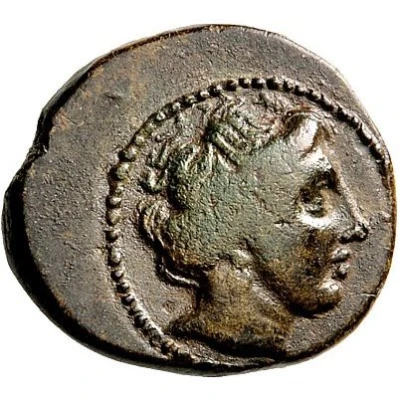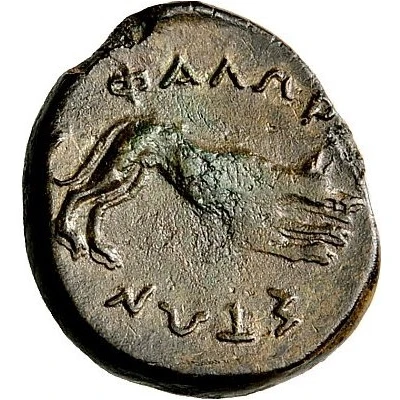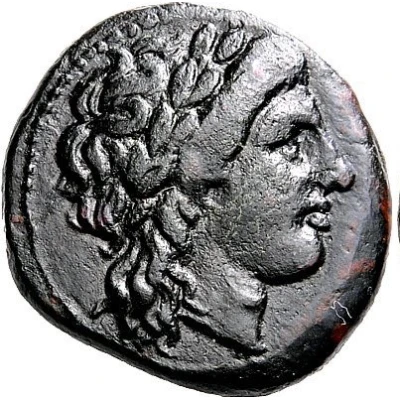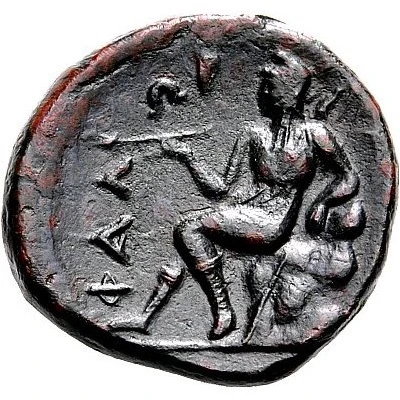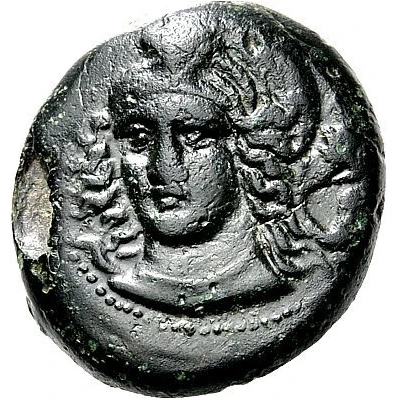
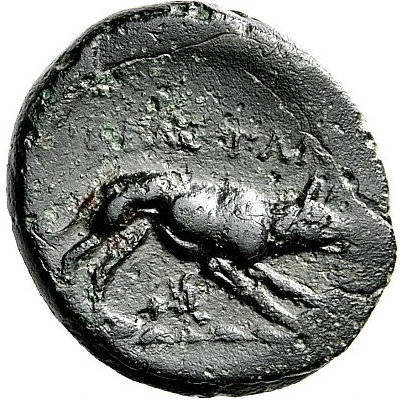

© Nomos AG
Tetrachalkon 302 BC - 286 BC
| Bronze | 8.48 g | 21.0 mm |
| Issuer | Phaloria (Thessaly) |
|---|---|
| Type | Standard circulation coin |
| Years | 302 BC - 286 BC |
| Value | Tetrachalkon (1⁄12) |
| Currency | Drachm |
| Composition | Bronze |
| Weight | 8.48 g |
| Diameter | 21.0 mm |
| Shape | Round (irregular) |
| Technique | Hammered |
| Demonetized | Yes |
| Updated | 2024-10-10 |
| Numista | N#171177 |
|---|---|
| Rarity index | 100% |
Reverse
Wolf at bay to right and below a bukranion.
Legende ΦΑΛΩ/ΡΙΑΣΣΤΑΝ or ΦΑΛΩ/ΡΙΑΣΤΩΝ
Script: Greek
Lettering: ΦΑΛΩΡΙΑΣΣΤΑΝ
Translation: The Phaloriassts
Interesting fact
The Tetrachalkon coin from Phaloria (Thessaly) is interesting because it features a unique combination of symbols on its obverse side, including a helmeted head of Athena, a griffin, and a Pegasus. This combination of symbols suggests that the coin may have been used as a form of currency in a specific trade or commercial context, possibly related to the worship of Athena or the mythology surrounding griffins and Pegasus. Additionally, the use of bronze in the coin's construction suggests that it may have been widely available and accessible to people in the region at the time.
